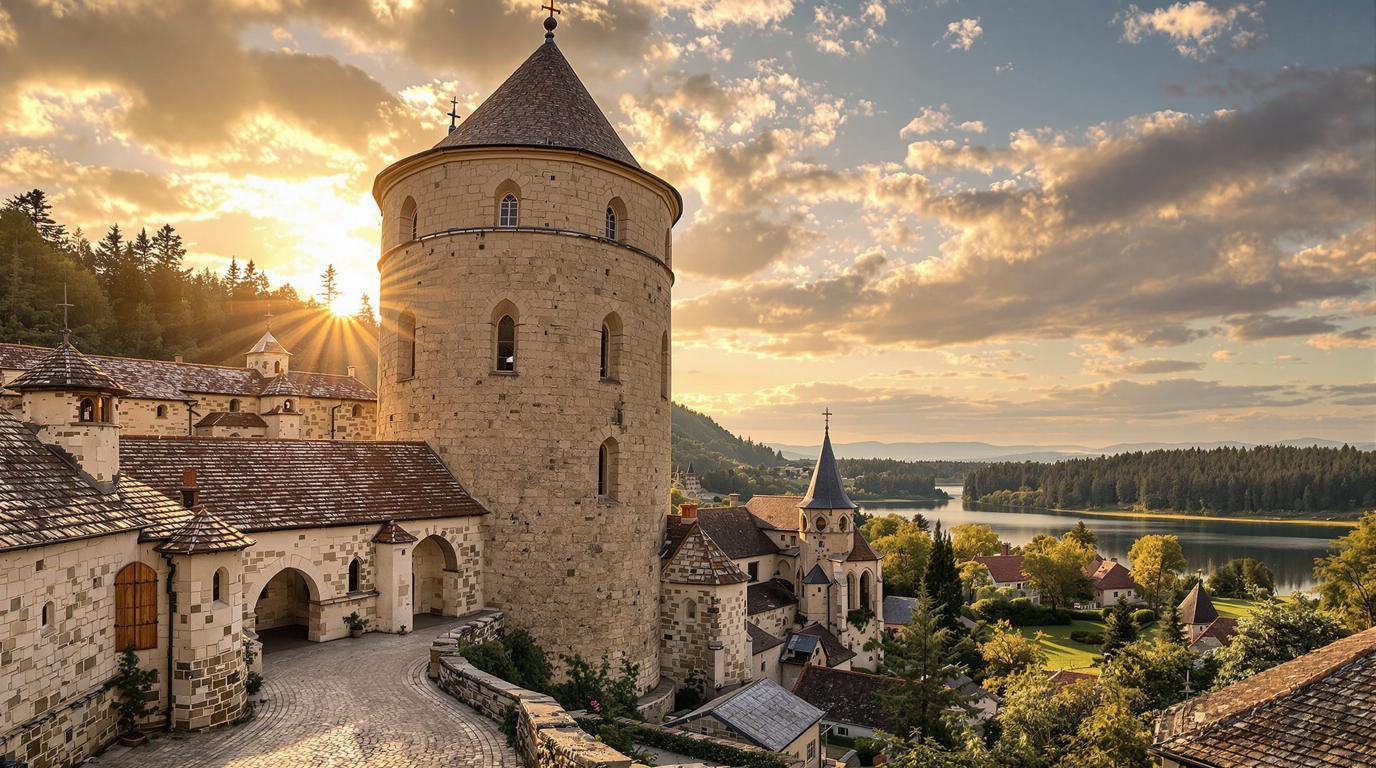Peyrat-le-Château might not appear on most travelers’ radar, but this medieval French gem packs centuries of history and natural splendor into its small footprint. Tucked within France’s Nouvelle-Aquitaine region, this commune of barely 1,000 residents harbors a resistance museum that played a pivotal role during WWII while sitting just 10 minutes from one of France’s largest artificial lakes.
A medieval tower that witnessed five centuries of history
The town’s iconic 15th-century square tower stands as a silent sentinel to history. Unlike most medieval structures, this imposing stone fortress survived countless conflicts relatively intact. Its hexagonal design and defensive features tell stories of a turbulent past when this quiet village was known as “Peyrat-le-Fort” – a testament to its strategic importance.
Local historian Jean Dupont notes,
“Our tower isn’t just stone and mortar; it’s the physical embodiment of our resilience through centuries of change.”
The resistance museum that honors ordinary heroes
The Musée de la Résistance elevates Peyrat-le-Château beyond a typical medieval village. This powerful museum documents the French Resistance’s bravery during Nazi occupation. Artifacts, photographs, and personal accounts create an immersive journey into a time when ordinary citizens became extraordinary heroes. Many visitors find themselves unexpectedly moved by exhibits detailing the local maquis (resistance fighters) who operated from the surrounding forests.
A church where Gothic meets Romanesque
The Église Saint-Martin et Saint-Martial showcases the architectural evolution common in rural French villages. What began as a Romanesque structure gradually incorporated Gothic elements as centuries passed. The church’s interior reveals vaulted ceilings where filtered light creates ever-changing patterns across ancient stone floors.
Lake Vassivière: The aquatic playground 10 minutes away
Just a short drive from town lies Lake Vassivière, a 1,000-hectare expanse of crystal-clear water surrounded by pine forests. This massive artificial lake rivals natural ones in beauty and offers everything from serene paddling to exhilarating water sports. Much like France’s Alpine lakes, Vassivière provides a refreshing escape during summer months.
The Island of Art where sculptures meet nature
Accessible by footbridge, the Isle of Vassivière houses the International Center for Art and Landscape. Here, contemporary sculptures emerge from woodland settings, creating surprising encounters between art and nature. The old Château de Vassivière grounds provide a picturesque backdrop for these modern installations.
Summer night markets bring medieval streets alive
On the first and third Wednesdays from June through August, Peyrat-le-Château transforms into a bustling marketplace. Local artisans display handcrafted goods while regional farmers offer Limousin beef, wild mushrooms, and traditional Creuse cake. The aroma of fresh bread and cheese mingles with laughter as locals and visitors alike gather in the village center.
The hidden village of Quenouille
Just outside town lies Quenouille, a collection of granite houses that seem frozen in time. Unlike France’s cliff-clinging villages, Quenouille spreads across gentle hills, with flower-filled courtyards hidden behind stone walls. Visit early morning when mist clings to ancient rooftops for an ethereal experience.
Sunken paths reveal forgotten routes
The Circuit de Peyrat-le-Château walking trail includes several sunken paths where centuries of foot traffic have worn routes below the surrounding landscape. These green tunnels, overhung with beech trees and ferns, connect to various hidden natural wonders throughout the region.
Claude Meunier, a local guide, explains,
“Walking these paths is walking through history itself. These aren’t tourist trails—they’re the actual routes villagers have used for centuries.”
A taste of authentic Limousin cuisine
Local restaurants showcase regional specialties using ingredients sourced from surrounding farms and forests. The pride of the region—Limousin beef—features prominently on menus alongside foraged mushrooms and locally-produced cheeses. Like Greece’s hidden islands, Peyrat-le-Château maintains culinary traditions that have changed little over generations.
As Marie Laurent, a lifelong resident, puts it,
“Our food tells our story—simple, honest, and deeply connected to this land.”
Peyrat-le-Château offers something increasingly rare in today’s world—authenticity. While it lacks the car-free charm of certain Greek islands, this French village delivers genuine encounters with history, nature, and culture that leave visitors feeling they’ve discovered something precious that mass tourism hasn’t yet claimed.
